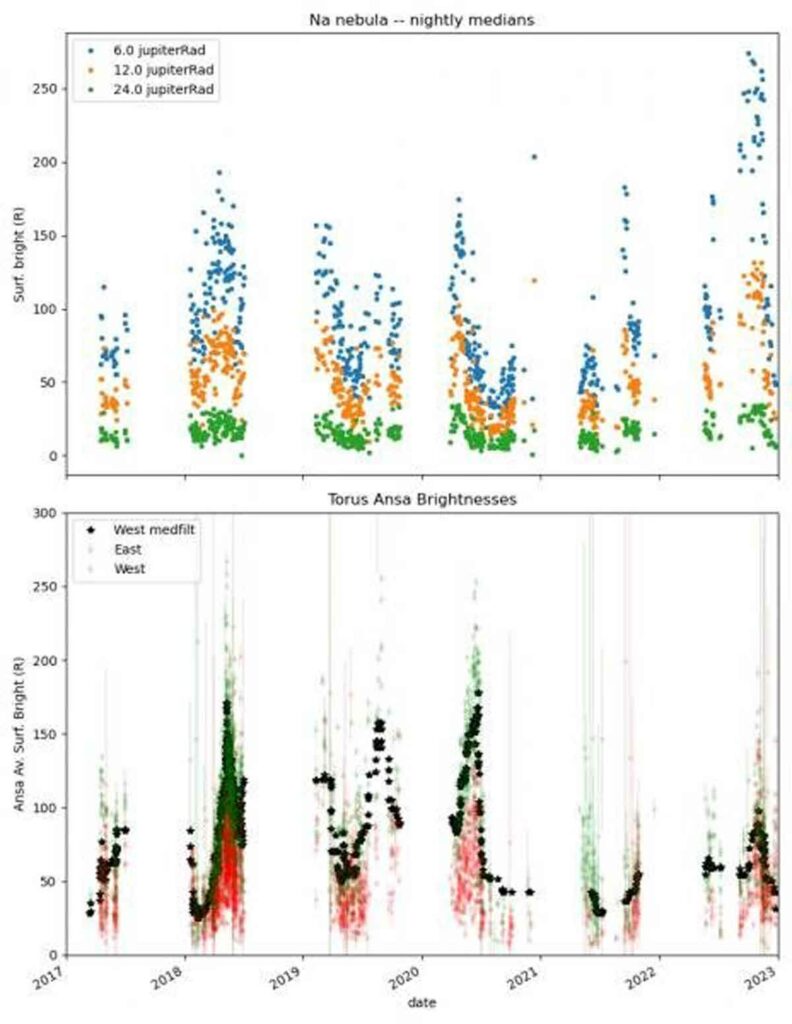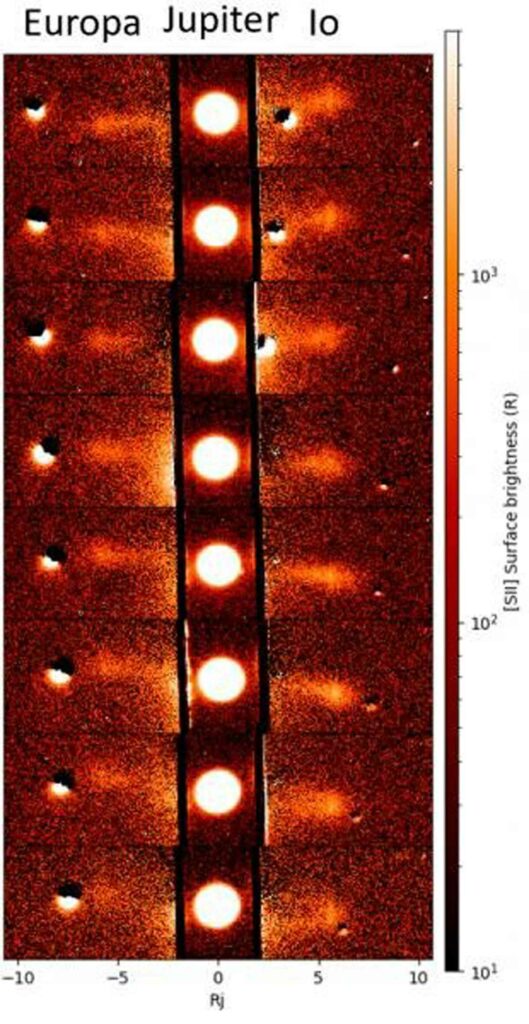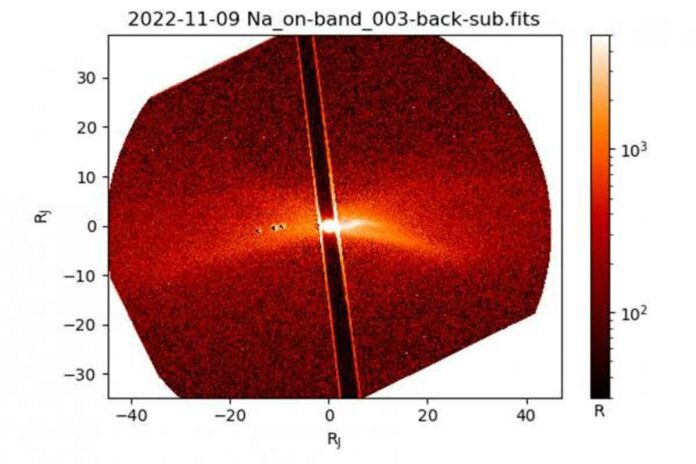Jeff Morgenthaler of the Planetary Science Institute discovered a large volcanic outburst on Jupiter’s moon Io using PSI’s Io Input/Output observatory (IoIO).
Since 2017, PSI Senior Scientist Morgenthaler has been monitoring volcanic activity on Io using IoIO. IoIO is located near Benson, Arizona. Observations show that an outburst occurs nearly every year, with the largest occurring in the fall of 2022.
Io is the smallest of Jupiter‘s four large moons. It is also the most volcanic body in the Solar System due to the tidal stresses it experiences from Jupiter and its two other large satellites, Europa and Ganymede.
IoIO employs a coronagraphic technique that dims the light from Jupiter in order to image faint gases near the very bright planet. The brightening of two of these gases, sodium and ionized sulfur, began in July and continued until December 2022. The ionized sulfur forms a donut-like structure that encircles Jupiter and is known as the Io plasma torus. It was unusually dim in this outburst.
The findings have far-reaching implications for NASA’s Juno spacecraft. It has been orbiting Jupiter since 2016. Juno flew past Europa during the outburst and is making its way toward Io for a close flyby in December 2023. Several Juno instruments are sensitive to changes in the plasma environment around Jupiter and Io. It can be directly linked to the type of volcanic activity detected by IoIO.

Having one or more copies of IoIO running somewhere else would be extremely beneficial in avoiding weather gaps. It could potentially provide more time coverage of Jupiter’s highly dynamic Io plasma torus and sodium nebula each night.

IoIO observes the Jovian sodium nebula as well as Mercury’s sodium tail, bright comets, and transiting extra-solar planets.

